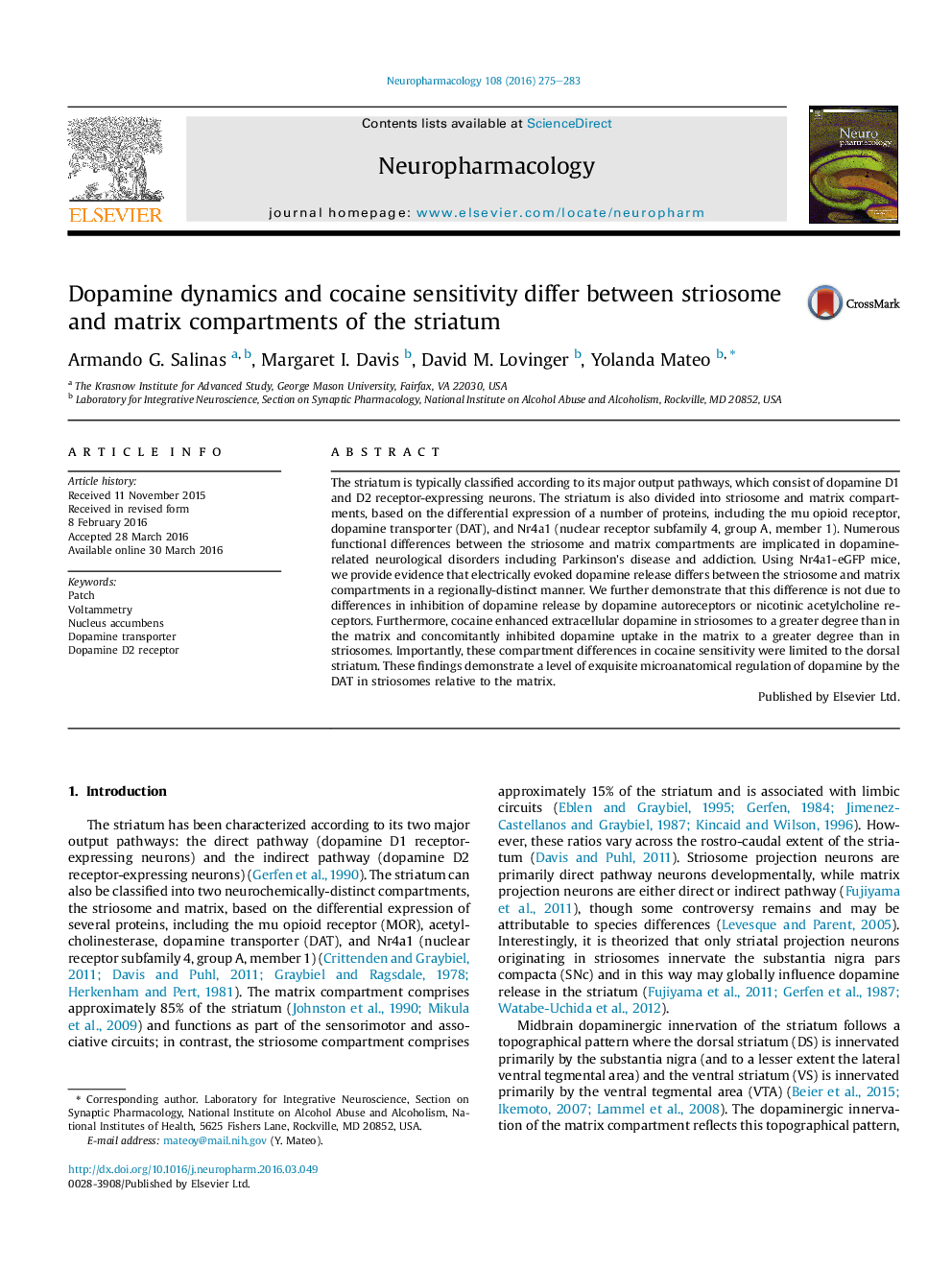| Article ID | Journal | Published Year | Pages | File Type |
|---|---|---|---|---|
| 5813488 | Neuropharmacology | 2016 | 9 Pages |
â¢The striatum consists of neurochemically-distinct striosome & matrix compartments.â¢Dopamine release differs between striosome and matrix compartments.â¢This difference is region dependent and partially DAT-mediated.â¢This difference is not attributable to dopamine D2 or nACh receptors.
The striatum is typically classified according to its major output pathways, which consist of dopamine D1 and D2 receptor-expressing neurons. The striatum is also divided into striosome and matrix compartments, based on the differential expression of a number of proteins, including the mu opioid receptor, dopamine transporter (DAT), and Nr4a1 (nuclear receptor subfamily 4, group A, member 1). Numerous functional differences between the striosome and matrix compartments are implicated in dopamine-related neurological disorders including Parkinson's disease and addiction. Using Nr4a1-eGFP mice, we provide evidence that electrically evoked dopamine release differs between the striosome and matrix compartments in a regionally-distinct manner. We further demonstrate that this difference is not due to differences in inhibition of dopamine release by dopamine autoreceptors or nicotinic acetylcholine receptors. Furthermore, cocaine enhanced extracellular dopamine in striosomes to a greater degree than in the matrix and concomitantly inhibited dopamine uptake in the matrix to a greater degree than in striosomes. Importantly, these compartment differences in cocaine sensitivity were limited to the dorsal striatum. These findings demonstrate a level of exquisite microanatomical regulation of dopamine by the DAT in striosomes relative to the matrix.
Graphical abstractDownload full-size image
